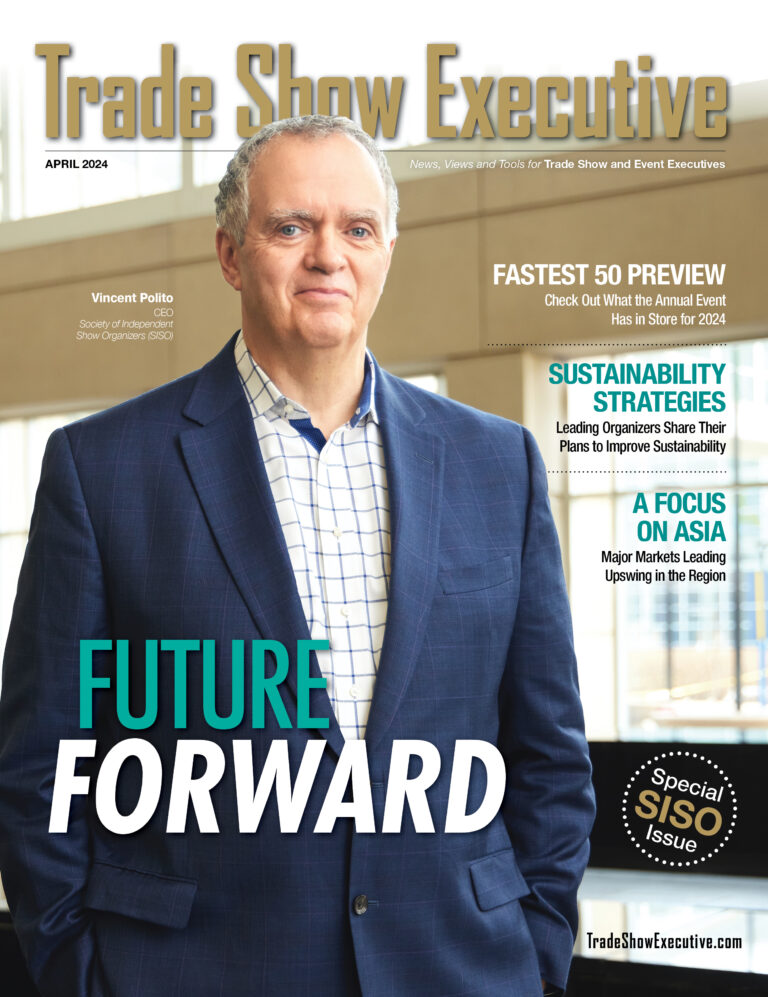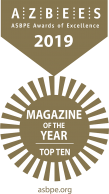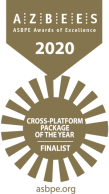Detroit – The countdown began on Nov. 1, 2000, the day that the NFL awarded the Super Bowl to Detroit. The city had just 1,921 days to transform the city. “The Super Bowl was the catalyst for focusing the entire city on redevelopment,” said Larry Alexander, President of the Detroit Metro Convention & Visitors Bureau. And as the days and months passed, Detroit’s skyline began its metamorphosis. Nearly $1 billion was invested in downtown development, from Ford Field and Comerica Park to hotels, restaurants and small retail businesses. Compuware moved its headquarters downtown from the suburbs; so did General Motors. First impressions count, and visitors who flew into the new Northwest Airlines terminal at Detroit’s Metro Airport were wowed by its state-of-the-art features, size and efficiency. During the drive from the airport to downtown, they saw a new clean look all along the I-94 freeway and witnessed the transformation of the Detroit’s waterfront modernization plan. Improvements were made to sidewalks, landscaping, and building facades in the area surrounding the sports stadium, Cobo Exhibition Center and all along Woodward Avenue. The shining new images of Detroit were ready for the world to see.
The Steelers were not the only one to taste victory on Feb. 5; positive images of Detroit were beamed to a worldwide audience. The media and celebrities were generally positive about the city, and government officials like Secretary of State Condaleezza Rice who attended the game told ESPN viewers, “The city looks beautiful. It’s a great day for Detroit. The people of Detroit deserve a lot of credit.”
What lessons can we learn from Detroit? The challenges Detroit faced in organizing and hosting the Super Bowl are similar to those faced by any large-scale event: housing, transportation, working with volunteers, dealing with the press, managing security, meeting unbendable deadlines and galvanizing leaders to agree on a common mission. Some of the uncommon solutions that Detroit employed can be adapted to the exposition industry.
The Value of Co-Location
Co-located events — such as corporate and association meetings or related exhibitions — can gain and give strength to the main event. A look at Super Bowl XL illustrates just how far and wide an event can flex its muscles. For starters, there were two consumer exhibitions nearby: The NFL Experience at the Cobo Exhibition & Conference Center and The Motown Winter Blast in tents and outdoor areas in downtown Detroit. Then 30 miles away, A Taste of the NFL was held at the Rock Financial Showplace, a newly renovated exhibition center in suburban Novi. Here is a brief overview of these and other events:
- The NFL Experience was a veritable theme park for diehard football fans and wannabe quarterbacks. Over 800,000 square feet of Cobo Center was decked out in artificial turf for this event which featured 50 immense exhibits, numerous clinics and a football card show. Attendees could test their quarterback skills, catch passes and kick field goals. Several NFL stars were on hand to sign autographs. There also was a sports shop for tee shirts, mugs, pens and other sports memorabilia. Local news stations broadcast interviews of suburban residents who came downtown for the first time in years, with their exuberance and surprise by the metamorphosis of downtown Detroit.
- The Motown Winter Blast was an event that celebrated cold weather activities such as skating, sledding and snowshoeing but also offered attendees a diversion in heated tents along Woodward Blvd. Some of the most popular diversions were the Dodge-Chrysler-Jeep Taste of Detroit with food from the area’s best restaurants; model cars and gear on display; and suntanned teens playing volleyball on a white sandy beach complete with a wave pool. Back outside, attendees could see the General Motors Ice Garden with life-sized ice sculptures of cars; a four-lane, 200 ft. snow slide; an ice skating rink; dog sledding; an outdoor concert stage. Chauffeurs in Model T cars took people for short rides in the immediate area.
- A Taste of the NFL, was one of the “richest” parties of the year in the Detroit area , not only for its culinary delights but also for the crowd it attracted. The event featured the top chefs from each of the 32 NFL cities, along with a current player or alumni from the team. Attendees sampled foods from each world-renowned chef; mingled with the players and celebrity guests; and participated in a silent auction. Tickets for the fundraiser started at $600 each. It was a “coming out party” for the Rock Financial Showplace, which rebuilt the old Novi Exposition Center into a versatile and functional exhibition facility, and gave it elegant touches such as crown moldings, tile and upgraded carpeting in the lobby and upscale landscaping on the large grounds surrounding the facility.
- There were numerous other events held for charities, including The Celebrity Skating Party, the NFL Charities Bowling Tournament and the NFL Alumni Bocce Ball Tournament.
- The Gridiron Glamour Fashion Show was staged at the Ritz Carlton Hotel in Dearborn, 10 miles away, proving that entertainment and special events don’t have to be adjacent to be successful.
- Concerts with Detroit’s own Bob Seger and Kid Rock at Joe Louis Arena; the Super Bowl Concert Series sponsored by Pepsi and featuring Kanye West; and the Motown Concert at the Masonic Temple.
All of these events, plus tours of the Motown Museum, Greektown, the Henry Ford Museum and Greenfield Village conveyed that there is a lot to do in Detroit. They helped built buzz for the game and the city, not only in the days and weeks leading up to Super Bowl XL, but for weeks afterwards. Moreover, they told a worldwide audience that the greater Detroit area can host a good party, and if the event is compelling enough, attendees will brave the cold, the wind, the rain and the snow to travel long distances. And on the home front, it sent a strong message that the suburbs can share in the economic impact.
Getting the Media to Work for You, Not Against You
An estimated 3,000 journalists came to Detroit to cover Super Bowl XL. Knowing the skeptical nature of reporters and the tendency of many of them to focus on the negative, how was Detroit able to attain such positive publicity throughout the event? It wasn’t by accident.
“The media strategy began three years ago,” said Renee Monforton, Director of Communications for the Detroit Metro Convention and Visitors Bureau. “We knew that people had an outdated image of Detroit so we began by imagining all the negativity that writers might focus on — safety, cleanliness and the cold weather.” Then tactics were developed accordingly.
“We never pretended to be Miami or Jacksonville. We embraced who we are, and made the cold weather work for us,” said Monforton. “For example, one of the messages that we repeatedly conveyed is that football is a cold weather sport. Another tactic was to create an event that celebrated cold weather activities.” The Motown Winter Blast was the incarnation of that plan.
Safety and cleanliness were moot points. As part of the transformation of the city, the downtown areas of Detroit benefited from new facades, landscaping and sidewalks. Vacant buildings were transformed into temporary retail shops, nightclubs and restaurants. During the pre-show coverage and live reports from the Motown Winter Blast, TV viewers saw the city’s new skyline, waterfront and downtown revival with Motown music as the musical backdrop. Images of the Ambassador Bridge to Canada served as a reminder that Detroit has an international border.
Learning from their peers was also a strategy employed. Host committee members and the communications staff of the Detroit convention and visitors bureau attended each Super Bowl from 2001 to 2005 to develop contacts with sports writers and learn how their news coverage unfolds. The CVB also had a media booth depicting a downtown Detroit urban loft at the ’04 and ’05 events.
Another tactic was to educate the local press. “Sometimes the local media can be our own worst enemy because the images they convey are often picked up by media in other cities and countries,” said Monforton. So Detroit officials developed a plan to enlist the ideas and support of local reporters and make them a part of the process. “We wanted them to work for us, not against us,” she said. Meetings were held where the press was asked for their opinion on what would make a good story for a sports magazine, entertainment magazine and local newspaper. From those ideas, the strategy was honed.
Monforton said that Roger Penske, chairman of the Super Bowl XL Host Committee, was on board from the very beginning of the process to work with the media. Penske is no stranger to dealing with the press, and proved to be a mastermind in crafting a media strategy. In addition, he entertained the media at Super Bowl XXXIX in Jacksonville on his yacht, the “Detroit Eagle.” As such, he gave them access to such notables as Gordie Howe, the legendary right winger for the Detroit Red Wings; Kirk Gibson, former right fielder for the Detroit Tigers; and Steve Yzerman who led the Detroit Red Wings to the Stanley Cup in 1997. These seemingly informal press trips proved to be educational not only for the writers but the staff of the Detroit CVB and Host committee.
It all paid off. Rarely has any event been portrayed by the media in such a positive light. In fact, early estimates of publicity for the month of January were 82 million impressions, which is comparable to over $4.2 million of advertising, according to Monforton. And that‘s just for one month.
Airtight Security
The Detroit Police Department was in charge of security for the Super Bowl XL, coordinating the efforts of over 10,000 law enforcement officials from 100 local, state and federal agencies, according to Detroit Police Chief Ella Bully-Cummings. The North American Aerospace Defense Command enforced a no-fly zone around Ford Field with F-16 and Canadian CF-18 fighter jets. Helicopters from the Coast Guard and other law enforcement agencies flew overhead. Specialty security teams patrolled the Detroit River. The Michigan National Guard brought in biological, radiation and chemical detection equipment. Federal agents were perched on the tops of buildings throughout the downtown area. Security cameras were strategically placed around the city, serving as the Police Department’s eye in the sky. Search dogs sniffed for explosives in every car, delivery vehicle and shuttle bus that attempted to enter the zone around the Renaissance hotel and Ford Field. Policemen, dressed as Seahawks and Steelers fans, mingled among the crowd.
Many security measures were top secret. Others were publicized in advance to thwart would-be troublemakers, such as the parking restrictions in the central business district from Jan. 31st to Feb. 6th. Some security procedures were intentionally released only a few days before the event. For example, Homeland Security announced on the Tuesday before the game that it would close the streets around the Renaissance Center on the Friday. Hotel guests could park their car in special lots and shuttle to the hotel. If they chose valet parking instead, they had to do without their car until Sunday evening.
Dignitaries and the media were housed at the Marriott Hotel at the RenCen. Two security checks were required before a guest was admitted to the area leading to the elevators. Hotel guests had to wear green wrist bands whether they were former Chicago Bears coach Mike Ditka or a reporter from Sports Illustrated. The guests of guests had to be pre-listed in the hotel registry.
To gain admittance to the Super Bowl XL, ticket holders went through metal detectors. Oversized bags were seized. Even recognizable Detroit VIPs such as racing legend Roger Penske and Edsel Ford of the Ford automotive dynasty (whose name is on the stadium!) waited in line and endured the same security checks. The wait took from 30 minutes to an hour. There were also numerous checks along the way to the stadium’s luxury suites.
The Detroit News reported that aside from a few arrests for ticket counterfeiters, there were no significant security problems.
Transportation – a Moving Experience
The master traffic transportation plan was coordinated by officials at the Michigan Intelligent Transportation Center in downtown Detroit. Cameras placed strategically in key traffic areas of the freeways, intersections and parking lots enabled officials to redirect traffic and funnel them out of traffic jams. Except for a few hitches, Detroit did an admirable job in handling the crowds that descended on the city by land, by river and by air. Besides the game, there were two consumer events held downtown during Super Bowl weekend including the Motown Winter Blast and the NFL Experience. From Friday, Feb. 3rd to Sunday, Feb. 5th, an estimated 154,000 people relied on the Detroit People Mover to get around. This was more than ten times the passenger traffic of a regular weekend. (See sidebar for the numbers.)
There were long lines for shuttle buses and the People Mover, and getting anywhere often took twice as long as one’s worst case scenario. One press person called it the weak link of an otherwise flawless event. Other news reports warned residents to allow extra time. News of delays, plus the cold, rain and high winds, did not deter thousands from coming, and the crowd never got out of control.
Traffic moved slowly but orderly after the game. This event had a high drive-in component and many Steelers fans headed home Sunday night. Detroit Metro Airport, and in particular, the new Northwest Airlines terminal, easily handled the estimated 25,000 passengers that departed on Monday. Roughly 220 private jets with VIPs flew in and out of local airports with no incidents. In the end, traffic moved out of the city almost as smoothly as it came in.
Sink or Swim
By hosting the Super Bowl, Detroit was placed in a worldwide spotlight that had the potential to shatter its image or elevate it to a grand scale. Through good planning, teamwork and a lot of ingenuity, Detroit got the job done. The momentum will carry it forward as it seeks to increase its share of the meetings and exposition industry.
Reach Larry Alexander at (313) 202-1800 or lalexander@visitdetroit.com; Renee Monforton at (313) 202-1951
or rmonforton@visitdetroit.com
Sidebar
Trade Show Executive Snapshot: The Super Bowl by the Numbers
$49 million to $300 million – Wide-ranging estimates of the economic impact of Super Bowl XL on the City of Detroit
$4.2 million – Value of p.r. for the city of Detroit in January alone
800,000 – Net square feet of space for exhibits and demos at The NFL Experience
400,000 – Estimated attendance at The Motown Winter Blast
154,000 – Estimated attendance at The NFL Experience
154,000 – Estimated ridership on the People Mover, Friday Feb. 3 to Sunday Feb. 5th
25,000 – The amount of leftover food (in lbs.) from Super Bowl Parties gathered by Forgotten Harvest for 7 local homeless organizations
3,000 – The number of journalists in town to report on the Super Bowl
850 – Number of private jets landing in Detroit area airports for Super Bowl events
Source: Event organizers; City of Detroit; Detroit Metro Convention & Visitors Bureau; Department of Airports; Forgotten Harvest











